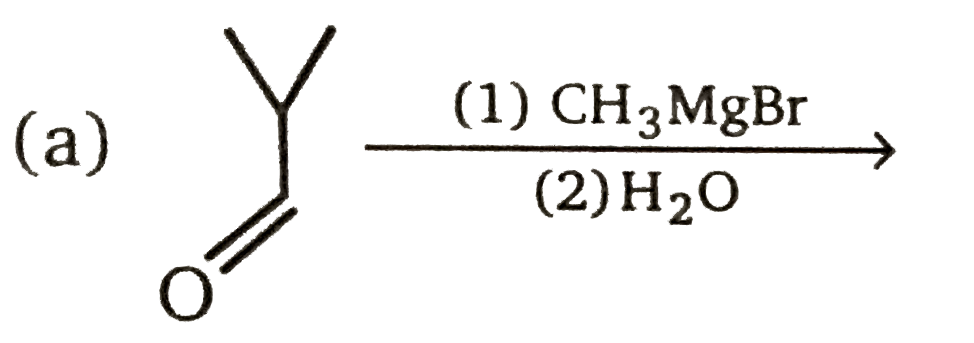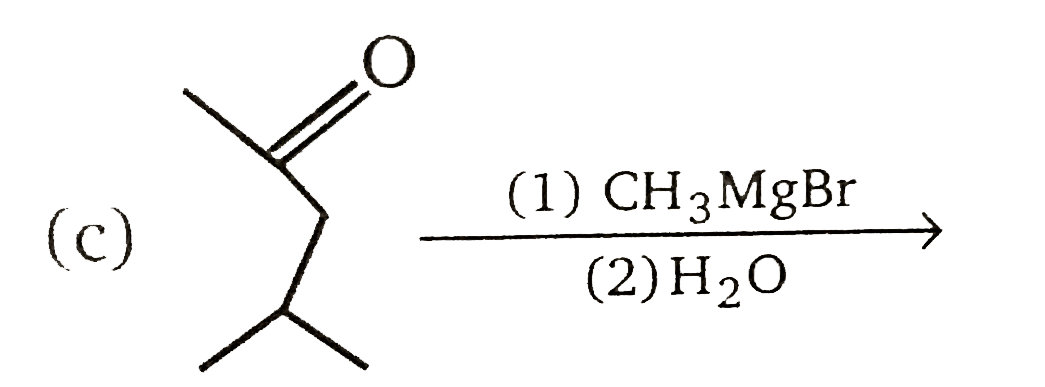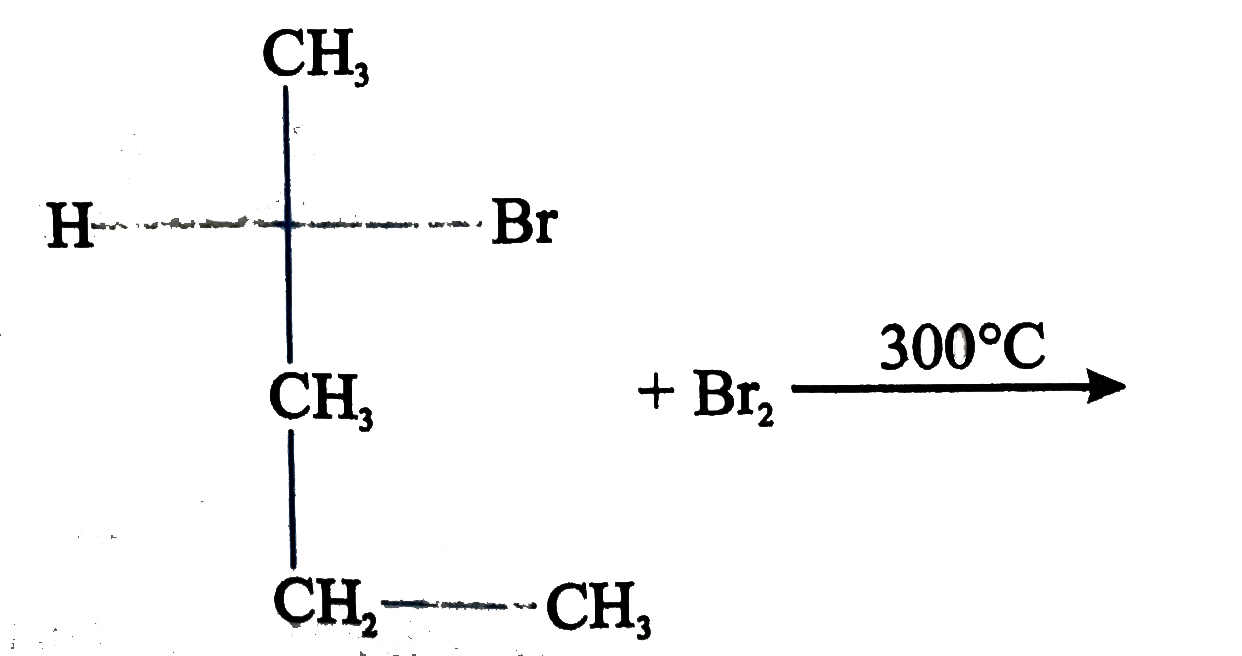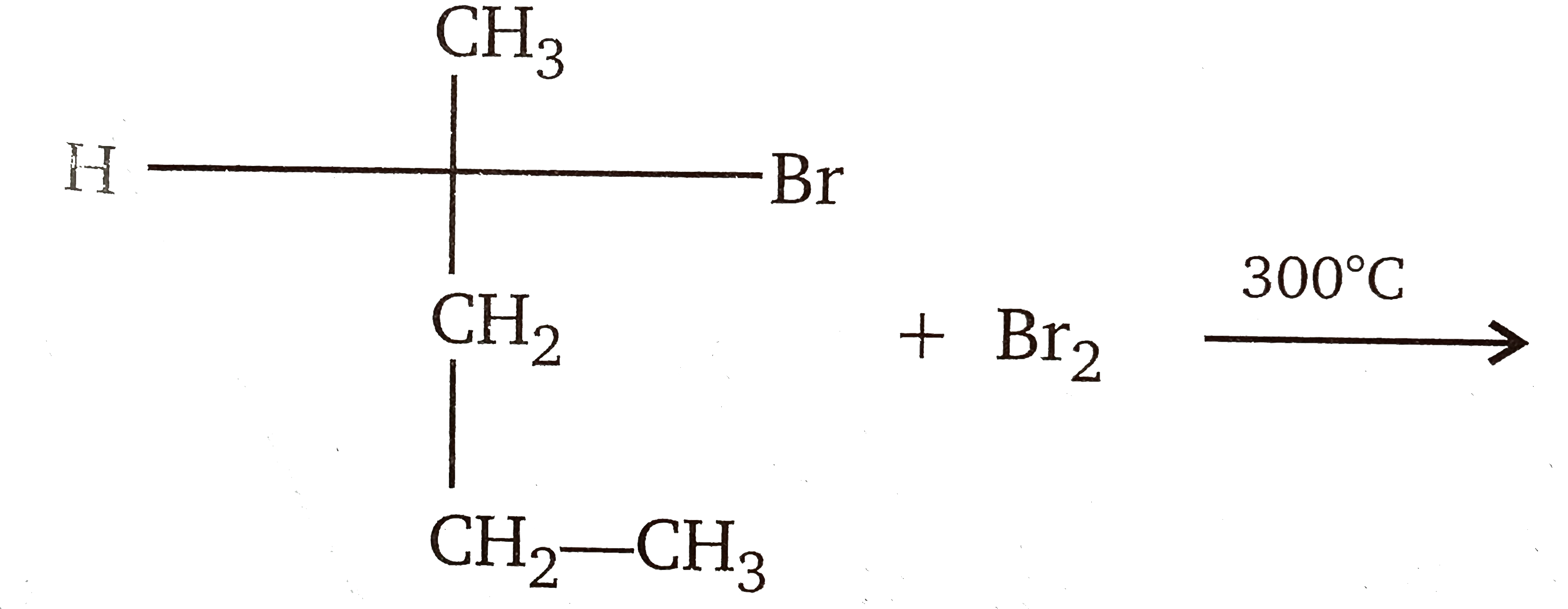in which of the following reaction, Amine is obtained as a product.
CH3−O∣∣C−NH2Br2+KOH−−−−−−→
CH3−O∣∣C−Cl(i)NaN3−−−−−→(ii)H2O
CH3−O∣∣C−OH(i)N3H/H+−−−−−−−−→(ii)H2O
CH3−O∣∣C−NH−OH(i)H+−−−−→(ii)H2O
The correct Answer is:A, B, C, D
To determine in which of the given reactions amines are obtained as products, we will analyze each reaction step by step.
1. First Reaction:
- We start with ethanamide (CH3CONH2).
- When ethanamide is treated with bromine (Br2) in the presence of a base (OH-), the nitrogen atom attacks the bromine, leading to the formation of a nitrene intermediate.
- This nitrene undergoes rearrangement to form isocyanate (CH3N=C=O).
- When isocyanate is reacted with water, it forms carbamic acid (CH3NHCOOH).
- Upon heating, carbamic acid decomposes to release carbon dioxide (CO2) and yields methylamine (CH3NH2).
- Conclusion: The first reaction produces an amine.
2. Second Reaction:
- The starting compound is acetyl chloride (CH3COCl).
- It reacts with sodium azide (NaN3), which acts as a nucleophile, substituting the chlorine atom and forming acyl azide (CH3CON3).
- Upon heating, acyl azide decomposes to form a nitrene.
- This nitrene again rearranges to form isocyanate.
- The isocyanate reacts with water to form carbamic acid, which upon heating releases CO2 and yields methylamine.
- Conclusion: The second reaction also produces an amine.
3. Third Reaction:
- The starting compound is acetic acid (CH3COOH).
- When acetic acid reacts with sodium azide (NaN3), it undergoes nucleophilic substitution, leading to the formation of acyl azide.
- Heating this compound leads to the formation of a nitrene.
- As before, the nitrene rearranges to form isocyanate, which then reacts with water to produce carbamic acid.
- The heating of carbamic acid releases CO2 and yields methylamine.
- Conclusion: The third reaction produces an amine as well.
4. Fourth Reaction:
- The starting compound is a compound with both an amine and hydroxyl group (likely a hydroxyamide).
- In the presence of acid (H+), the lone pairs on nitrogen and oxygen facilitate the formation of a nitrene.
- This nitrene undergoes rearrangement to form isocyanate.
- The isocyanate reacts with water to form carbamic acid, which upon heating releases CO2 and yields an amine.
- Conclusion: The fourth reaction also produces an amine.
Final Answer:
All four reactions yield amines as products.
---
- We start with ethanamide (CH3CONH2).
- When ethanamide is treated with bromine (Br2) in the presence of a base (OH-), the nitrogen atom attacks the bromine, leading to the formation of a nitrene intermediate.
- This nitrene undergoes rearrangement to form isocyanate (CH3N=C=O).
- When isocyanate is reacted with water, it forms carbamic acid (CH3NHCOOH).
- Upon heating, carbamic acid decomposes to release carbon dioxide (CO2) and yields methylamine (CH3NH2).
- Conclusion: The first reaction produces an amine.
- The starting compound is acetyl chloride (CH3COCl).
- It reacts with sodium azide (NaN3), which acts as a nucleophile, substituting the chlorine atom and forming acyl azide (CH3CON3).
- Upon heating, acyl azide decomposes to form a nitrene.
- This nitrene again rearranges to form isocyanate.
- The isocyanate reacts with water to form carbamic acid, which upon heating releases CO2 and yields methylamine.
- Conclusion: The second reaction also produces an amine.
- The starting compound is acetic acid (CH3COOH).
- When acetic acid reacts with sodium azide (NaN3), it undergoes nucleophilic substitution, leading to the formation of acyl azide.
- Heating this compound leads to the formation of a nitrene.
- As before, the nitrene rearranges to form isocyanate, which then reacts with water to produce carbamic acid.
- The heating of carbamic acid releases CO2 and yields methylamine.
- Conclusion: The third reaction produces an amine as well.
- The starting compound is a compound with both an amine and hydroxyl group (likely a hydroxyamide).
- In the presence of acid (H+), the lone pairs on nitrogen and oxygen facilitate the formation of a nitrene.
- This nitrene undergoes rearrangement to form isocyanate.
- The isocyanate reacts with water to form carbamic acid, which upon heating releases CO2 and yields an amine.
- Conclusion: The fourth reaction also produces an amine.
All four reactions yield amines as products.
Topper's Solved these Questions
- BOOK - MOTIONCHAPTER - CARBOXYLIC ACIDEXERCISE - Exercise - 316videos
CARBOXYLIC ACID
- BOOK - MOTIONCHAPTER - CARBOXYLIC ACIDEXERCISE - Exercise - 4 (LEVEL - 1 )15videos
CARBOXYLIC ACID
- BOOK - MOTIONCHAPTER - CARBOXYLIC ACIDEXERCISE - Exercise - 2(LEVEL - 1)26videos
CARBOXYLIC ACID
- BOOK - MOTIONCHAPTER - CARBONL COMPOUNDSEXERCISE - EXERCISE - 4 LEVEL -II24videos
CARBONL COMPOUNDS
- BOOK - MOTIONCHAPTER - CHEMICAL BONDING EXERCISE - EXERCISE -4 LEVEL-II40videos
CHEMICAL BONDING
Similar Questions
Knowledge Check
- Question 1 - Select One
Amine is obtained as major product in
A BCH3−CH2−CH∣Cl−CH3NaNH2−−−−→NH3CCH3−O∣∣C−NH−CH3LiAlH4−−−→DAll of these
BCH3−CH2−CH∣Cl−CH3NaNH2−−−−→NH3CCH3−O∣∣C−NH−CH3LiAlH4−−−→DAll of these - Question 2 - Select One
In which of the following reaction, phosphine is not obtained as product
ACa3P2+H2O→BP4+NaOH→CH3PO4Δ−−→DH3PO3Δ−−→ - Question 3 - Select One
In which of the following reaction 2∘ alcohol is obtained as a product ?
A B
B C
C DBoth (a) and (b)
DBoth (a) and (b)
In which of the following reaction cyanide will be obtained as a major product ?
View SolutionIn which of the following reaction, the product obtained is ter-butyl methyl ether ?
View SolutionIn which of the following reactions, the product obtained is chiral ?
View Solution
Which of the following compounds will not be obtained as a product in the above reaction?View Solution
Which of the following compound will not be obtained as a product in the above reaction?View Solution

